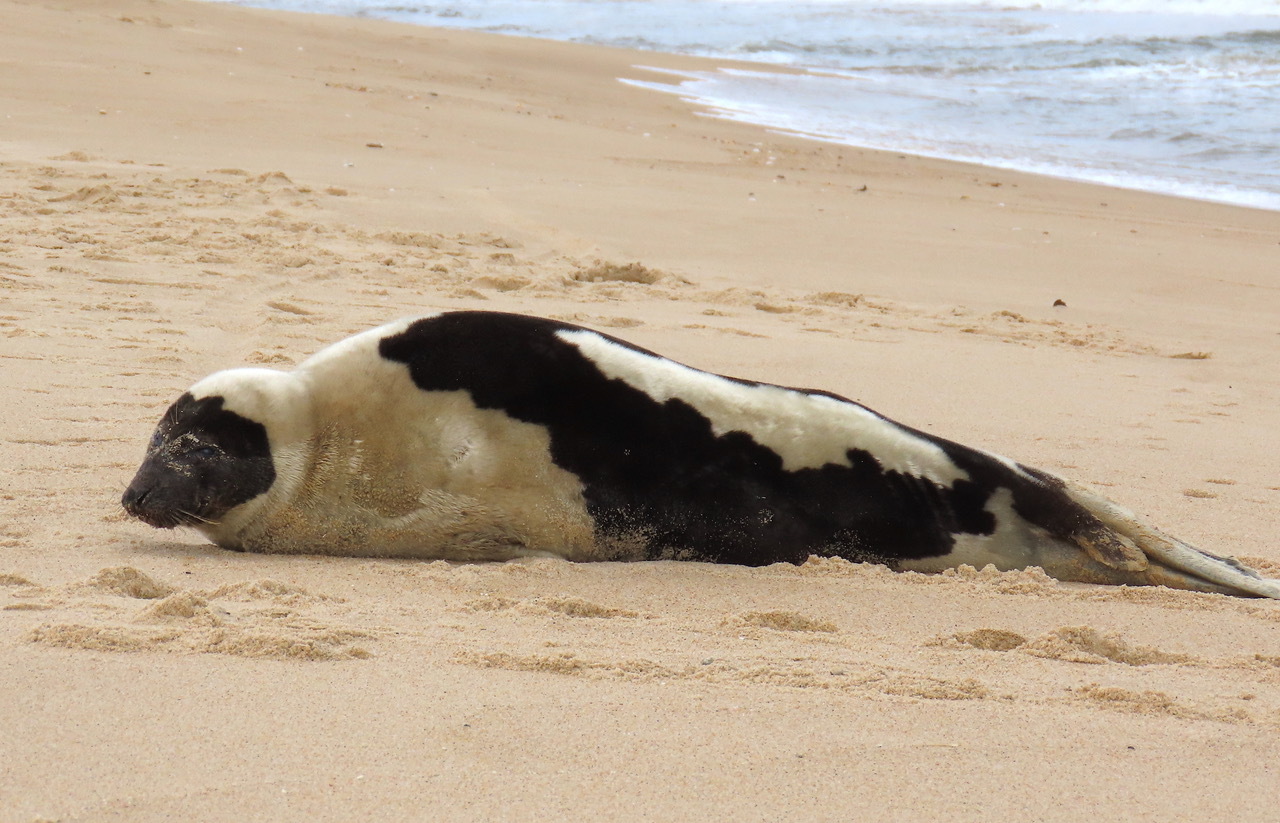
Following the movements of schools of herring, both Atlantic menhaden and alewives, from their wintering grounds offshore on the continental shelf to inshore waters, are flocks of Northern gannets. With a wingspan of 6 feet, this white-colored bird with wings tipped in contrasting black has been seen, photographed and filmed last week congregating high over their fish prey and launching themselves like missiles into the thick of the school in a spectacular display called a “plunge dive.”
Most dives are only as deep as the surface feeding herring are found, but the plunge dives from as high as 100 feet above the water can carry Northern gannets as deep as 70 feet.
Like the albatrosses, the Northern gannet spends its entire life at sea, either on the wing or resting on the water’s surface, only coming ashore to nest. These beautiful birds are en route to their nesting grounds on cliffside colonies on the coasts of Quebec and Newfoundland, where they will lay a single egg. Juveniles may travel as far as the Gulf of Mexico during their first year, and will not reach breeding age until 4-5 years old.
The other interesting visitor from the north that I encountered this past week was also adorned in contrasting black and while: a harp seal at Indian Wells Beach reported by Vay David of Springs. I have encountered several juvenile harp seals here on Long Island, but this was the first adult I’ve ever seen.
Whereas I had to rely on seal biologists to confirm the identification of the juveniles, there was no mistaking what species was resting on the ocean beach on Sunday. Its adult pelage includes a black face and wide, black oval band on the otherwise whitish-colored body. To some, the oval band apparently conjures up an image of a harp, for which the seal is named.
It’s scientific name, pagophilus groenlandicus, refers to its close relationship with pack ice (Pago is Greek for ice and philus means lover), while Greenland is the center of their global distribution that spans eastward from the Gulf of St. Lawrence to the White Sea, Russia. As with all wildlife species, there are the few individuals that don’t follow the rules and occasionally wander as far south as Virginia.
Growing to 6 feet in length and weighing up to 400 pounds, the harp seal fits between our two common seal species: larger than the harbor seal and smaller than the gray. Its diet includes a number of marine organisms but is dominated by pelagic fish such as capelin, a type of smelt that grows to 8-10 inches in length.
Incredible divers, harps can feed on bottom fish such as cod in 1,000 feet of water. With the collapse of the Atlantic cod fishery, many looked at the large harp seal population as a scapegoat for poor fisheries management and overharvesting. Studies found that Atlantic cod comprised between 3 percent and 5 percent of the harp seal’s diet. Also, the harp seal population was estimated to be in the tens of millions many years ago when the Atlantic cod population was still robust.
An interesting result of one study is that this seal consumes large quantities of freshwater from snow and ice.
This ice-loving creature’s migratory movements and breeding are closely related to the ice. This time of year, many adults will haul out on the pack ice for several weeks to molt, fasting the entire time. They then migrate north with the receding ice, and reverse course in the fall as the pack ice grows southward. In mid-February, the mature (> 4 year old) females search for suitable pack ice for pupping. The drifting ice needs to be at least 10 feet thick.
The winter pupping sites are centered on the Gulf of St. Lawrence and off the coast of Labrador and northern Newfoundland. Pupping takes place up until mid-March. The 40-inch-long pups (one per female) weigh 25 pounds and over the short, 2.5-week nursing period, will gain an astonishing 50 pounds … tripling their weight!
By April, after their pups have weaned, the females are ready to mate. As is the case with the river otter, our seal species employ the interesting reproductive strategy called “delayed implantation” to ensure that the pups are born at the most advantageous time of year.
This is the most numerous seal in eastern Canada, with an estimated population there of just under 5 million (1994) and annual pup production of 500,000. This is the seal that received much media attention for the annual hunt that included killing them with clubs as they lay on the ice. The Inuit and some Newfoundland fishermen relied on the sale of furs, oil and meat from the harvest, which is carefully regulated to maintain current population levels. The media attention resulted in the loss of markets for the fur.
The pack ice at the pupping grounds was very unstable this winter, resulting in many pups drowning before they were ready to take to the water. This is being viewed as another example of rapid changes in weather patterns and overall warming wreaking havoc on ecosystems and the life history strategies of individual species, adaptive strategies that evolved over long periods of time and are not capable of making rapid adjustments.